Showing Spotlights 1905 - 1912 of 2780 in category All (newest first):
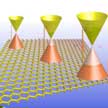 A group of researchers from Singapore, led by Professor Dingyuan Tang from Nanyang Technological University and Professor Kian Ping Loh from National University of Singapore, have reported the first breakthrough in using few-layer graphene as a saturable absorber for the mode locking of lasers. Despite its prominent mechanical and electrical properties, graphene's optical response has previously been considered to be weak and featureless, so the main interests of the research community are centered on its electronics properties. But now, Tang and Loh demonstrate that graphene can be used for telecommunications applications and that its weak and universal optical response might be turned into advantages for ultrafast photonics applications.
A group of researchers from Singapore, led by Professor Dingyuan Tang from Nanyang Technological University and Professor Kian Ping Loh from National University of Singapore, have reported the first breakthrough in using few-layer graphene as a saturable absorber for the mode locking of lasers. Despite its prominent mechanical and electrical properties, graphene's optical response has previously been considered to be weak and featureless, so the main interests of the research community are centered on its electronics properties. But now, Tang and Loh demonstrate that graphene can be used for telecommunications applications and that its weak and universal optical response might be turned into advantages for ultrafast photonics applications.
Jan 6th, 2010
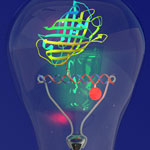 One challenge in designing nanomachines is being able to establish how well they work and optimize their performance. This is where single molecule techniques will play an important role. With advances in nanotechnologies, it is possible to construct simple nanomachines that can perform simple functions such as opening and closing of a DNA device (e.g. DNA tweezers or DNA switches), small rotational and translational motors and energy transfer cascades. Using single-molecule techniques researchers can watch individual nanomachines working and determine the functionality of their design. Researchers in Germany now have incorporated optical addressability to these nanomachines. Hence, they can optically detect and eventually control the state of the nanodevice.
One challenge in designing nanomachines is being able to establish how well they work and optimize their performance. This is where single molecule techniques will play an important role. With advances in nanotechnologies, it is possible to construct simple nanomachines that can perform simple functions such as opening and closing of a DNA device (e.g. DNA tweezers or DNA switches), small rotational and translational motors and energy transfer cascades. Using single-molecule techniques researchers can watch individual nanomachines working and determine the functionality of their design. Researchers in Germany now have incorporated optical addressability to these nanomachines. Hence, they can optically detect and eventually control the state of the nanodevice.
Dec 23rd, 2009
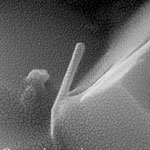 No other element in the periodic table bonds to itself in an extended network with the strength of the carbon-carbon bond. This special nature of carbon, combined with the molecular perfection of single-walled nanotubes endows these nanotubes with exceptional material properties, such as very high electrical and thermal conductivity, strength, stiffness, and toughness. As a result, single-walled carbon nanotubes (SWCNTs) are the strongest material known to science. SWCNTs potentially can add incredible strength, stiffness and electrical conductivity to all kinds of composite materials. Unfortunately, they are always held together in rope form due to their extremely small dimension and van der Waals attraction and their strength can neither be exploited nor measured. However, if several SWCNTs are concentrically nested in a confined space, the sliding issue can be resolved and the SWCNTs may share the applied tensile load to realize nanometer-scale materials remarkably stronger than the individual SWCNTs.
No other element in the periodic table bonds to itself in an extended network with the strength of the carbon-carbon bond. This special nature of carbon, combined with the molecular perfection of single-walled nanotubes endows these nanotubes with exceptional material properties, such as very high electrical and thermal conductivity, strength, stiffness, and toughness. As a result, single-walled carbon nanotubes (SWCNTs) are the strongest material known to science. SWCNTs potentially can add incredible strength, stiffness and electrical conductivity to all kinds of composite materials. Unfortunately, they are always held together in rope form due to their extremely small dimension and van der Waals attraction and their strength can neither be exploited nor measured. However, if several SWCNTs are concentrically nested in a confined space, the sliding issue can be resolved and the SWCNTs may share the applied tensile load to realize nanometer-scale materials remarkably stronger than the individual SWCNTs.
Dec 22nd, 2009
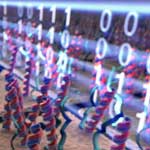 Much of today's genetic research and diagnostics uses tools and technologies enabled by DNA's ability to bind to its complementary strand in a sequence specific manner. For biologists studying molecular mechanisms inside cells, this information helps to quantify the expression levels of genes. Detection of the binding - or hybridization - of DNA strands is at the heart of modern medicine. The technology for detecting DNA hybridization mainly relies on the use of fluorescent labels. The complementary strand coming from the sample bears a label, so detection of florescence signal indicates hybridization. While this may sound straightforward, it has major limitations. Researchers have now reported a new technique for genetic analysis using nanomechanical response of hybridized DNA/RNA molecules. This new technique is several orders of magnitude more sensitive than other approaches and it is a lot simpler to use.
Much of today's genetic research and diagnostics uses tools and technologies enabled by DNA's ability to bind to its complementary strand in a sequence specific manner. For biologists studying molecular mechanisms inside cells, this information helps to quantify the expression levels of genes. Detection of the binding - or hybridization - of DNA strands is at the heart of modern medicine. The technology for detecting DNA hybridization mainly relies on the use of fluorescent labels. The complementary strand coming from the sample bears a label, so detection of florescence signal indicates hybridization. While this may sound straightforward, it has major limitations. Researchers have now reported a new technique for genetic analysis using nanomechanical response of hybridized DNA/RNA molecules. This new technique is several orders of magnitude more sensitive than other approaches and it is a lot simpler to use.
Dec 21st, 2009
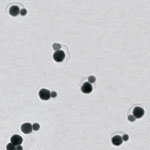 Surface-enhanced Raman scattering (SERS) offers enormous potential for chemical sensing, even though the large nonlinearity of the effect makes reproducible sensing difficult. SERS relies upon a fundamental phenomenon in physics called the Raman effect - the change in the frequency of monochromatic light, such as a laser, when it passes through a substance. Properly harnessed, Raman scattering can identify specific molecules by detecting their characteristic spectral fingerprints. A novel DNA-based assembly technique developed by scientists in South Korea now offers a means of precise engineering of gap distances in nanoparticle dumbbells for a robust surface-enhanced Raman sensing of DNA and RNA molecules.
Surface-enhanced Raman scattering (SERS) offers enormous potential for chemical sensing, even though the large nonlinearity of the effect makes reproducible sensing difficult. SERS relies upon a fundamental phenomenon in physics called the Raman effect - the change in the frequency of monochromatic light, such as a laser, when it passes through a substance. Properly harnessed, Raman scattering can identify specific molecules by detecting their characteristic spectral fingerprints. A novel DNA-based assembly technique developed by scientists in South Korea now offers a means of precise engineering of gap distances in nanoparticle dumbbells for a robust surface-enhanced Raman sensing of DNA and RNA molecules.
Dec 17th, 2009
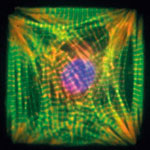 Since its invention in 1986 by Binnig, Quate, and Gerber, the atomic force microscope (AFM) has become an indispensable tool for investigators in the physical, materials, and biological sciences. The AFM quickly gained acceptance in these fields due to its ability to capture topographical maps of surfaces in either air or liquid with sub-angstrom and nanometer resolution. This Application Note briefly describes the basics of both optical and atomic force microscopy, followed by a discussion of some of the technical challenges of integrating these two distinct imaging modalities. In certain cases, the benefits and disadvantages of different approaches to design and integration are discussed. Lastly, a few examples of successful application of these combined imaging modalities are presented.
Since its invention in 1986 by Binnig, Quate, and Gerber, the atomic force microscope (AFM) has become an indispensable tool for investigators in the physical, materials, and biological sciences. The AFM quickly gained acceptance in these fields due to its ability to capture topographical maps of surfaces in either air or liquid with sub-angstrom and nanometer resolution. This Application Note briefly describes the basics of both optical and atomic force microscopy, followed by a discussion of some of the technical challenges of integrating these two distinct imaging modalities. In certain cases, the benefits and disadvantages of different approaches to design and integration are discussed. Lastly, a few examples of successful application of these combined imaging modalities are presented.
Dec 16th, 2009
 A scarcity of empirical data - especially regarding losses - hampers nanotechnology-related risk dialogue. Nanotechnology is a growing niche, so there is little litigation or loss history to analyze. Thus, much of the discussion of nanotechnology and its management flows from hypothetical examples. Less murky is the fact that nanotechnology is not a passing fad. It has innovative applications for a range of technologies and sectors, including drug delivery, medical imaging, integrated sensors, and semiconductors. The biggest areas of nanotechnology risk management concerns lies in workers' compensation and product liability. This article looks at industry responses and risk management strategies.
A scarcity of empirical data - especially regarding losses - hampers nanotechnology-related risk dialogue. Nanotechnology is a growing niche, so there is little litigation or loss history to analyze. Thus, much of the discussion of nanotechnology and its management flows from hypothetical examples. Less murky is the fact that nanotechnology is not a passing fad. It has innovative applications for a range of technologies and sectors, including drug delivery, medical imaging, integrated sensors, and semiconductors. The biggest areas of nanotechnology risk management concerns lies in workers' compensation and product liability. This article looks at industry responses and risk management strategies.
Dec 15th, 2009
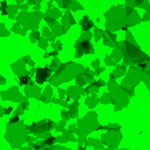 Graphene based sheets such as pristine graphene, graphene oxide, or reduced graphene oxide are basically single atomic layers of carbon network. They are the world's thinnest materials. A general visualization method that allows quick observation of these sheets would be highly desirable as it can greatly facilitate sample evaluation and manipulation, and provide immediate feedback to improve synthesis and processing strategies. Current imaging techniques for observing graphene based sheets include atomic force microscopy, transmission electron microscopy, scanning electron microscopy and optical microscopy. Some of these techniques are rather low-throughput. And all the current techniques require the use of special types of substrates. This greatly limits the capability to study these materials. Researchers from Northwestern University have now reported a new method, namely fluorescence quenching microscopy, for visualizing graphene-based sheets.
Graphene based sheets such as pristine graphene, graphene oxide, or reduced graphene oxide are basically single atomic layers of carbon network. They are the world's thinnest materials. A general visualization method that allows quick observation of these sheets would be highly desirable as it can greatly facilitate sample evaluation and manipulation, and provide immediate feedback to improve synthesis and processing strategies. Current imaging techniques for observing graphene based sheets include atomic force microscopy, transmission electron microscopy, scanning electron microscopy and optical microscopy. Some of these techniques are rather low-throughput. And all the current techniques require the use of special types of substrates. This greatly limits the capability to study these materials. Researchers from Northwestern University have now reported a new method, namely fluorescence quenching microscopy, for visualizing graphene-based sheets.
Dec 14th, 2009
 A group of researchers from Singapore, led by Professor Dingyuan Tang from Nanyang Technological University and Professor Kian Ping Loh from National University of Singapore, have reported the first breakthrough in using few-layer graphene as a saturable absorber for the mode locking of lasers. Despite its prominent mechanical and electrical properties, graphene's optical response has previously been considered to be weak and featureless, so the main interests of the research community are centered on its electronics properties. But now, Tang and Loh demonstrate that graphene can be used for telecommunications applications and that its weak and universal optical response might be turned into advantages for ultrafast photonics applications.
A group of researchers from Singapore, led by Professor Dingyuan Tang from Nanyang Technological University and Professor Kian Ping Loh from National University of Singapore, have reported the first breakthrough in using few-layer graphene as a saturable absorber for the mode locking of lasers. Despite its prominent mechanical and electrical properties, graphene's optical response has previously been considered to be weak and featureless, so the main interests of the research community are centered on its electronics properties. But now, Tang and Loh demonstrate that graphene can be used for telecommunications applications and that its weak and universal optical response might be turned into advantages for ultrafast photonics applications.
 Subscribe to our Nanotechnology Spotlight feed
Subscribe to our Nanotechnology Spotlight feed





